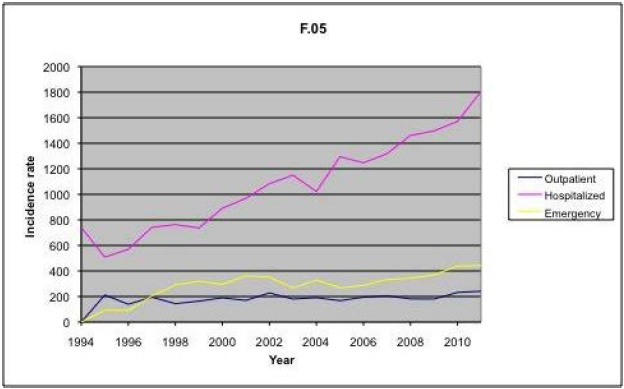No CrossRef data available.
Published online by Cambridge University Press: 15 April 2020
Delirium is a common complex syndrome with serious outcomes such as increased mortality, physical morbidity and length of hospitalization. There are similarities with symptoms of mental illnesses, which may lead to under-diagnosis of delirium in psychiatric patients. Thus in spite of the severity of delirium, it frequently goes unrecognised and hence is inadequately managed.
The literature about the incidence of delirium in psychiatric patients is sparse.
A description of the pattern of admission will help understand the clinical features of delirium.
To estimate the diagnostic incidence and describe the pattern of admission (inpatient, outpatient and emergency) of delirium in Danish psychiatric patients from 1994–2011.
Using a nationwide population-based mental health register to examine diagnoses of delirium from 1994–2011, where ICD-10 diagnostic criteria have been used. The delirium diagnoses include delirium unspecified, delirium superimposed on dementia and delirium due to alcohol or drug use or in a withdrawal state. The incidence rates were age-standardized and the statistical analyses performed with STATA.
Males dominate in all three groups of delirium diagnoses. The incidence rates of delirium unspecified in hospitalized patients have increased markedly, graph 1. The incidence rates of delirium in hospitalized dementia do not show the same increase.
Fig. 1
[graph 1]

The incidence rates of delirium unspecified in hospitalized psychiatric patients have increased.
Comments
No Comments have been published for this article.